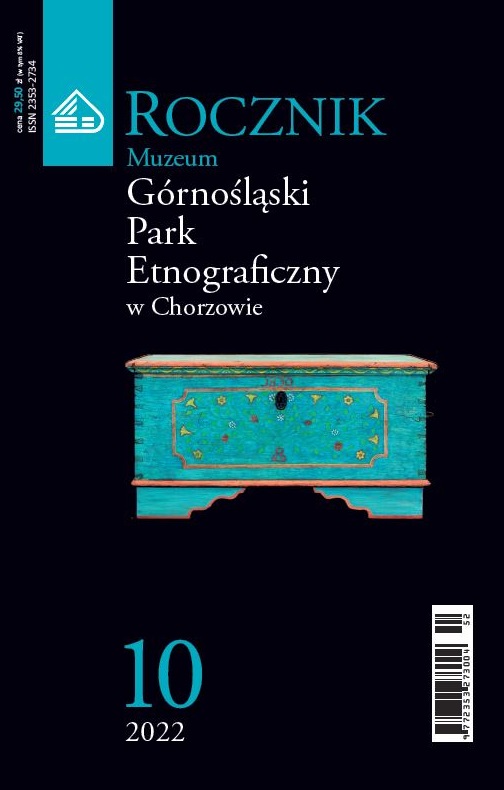Ludwik Starostzick jako zbieracz i badacz pieśni rybnickich
Ludwik Starostzick as a Collector and a Researcher of Folk Songs from Rybnik
Author(s): Adam OkunSubject(s): Anthropology, Customs / Folklore, Music
Published by: Wydawnictwo Muzeum „Górnośląski Park Etnograficzny w Chorzowie”
Keywords: Folklore; intangible cultural heritage; Ludwik Starostzick; region of Rybnik; Silesian dialect; Silesian folk songs; the land of Rybnik; Upper Silesia
Summary/Abstract: The region of Rybnik as a historical part of Upper Silesia, in its current administrative structure comprises of two independent districts, an urban district with its main town of Rybnik and a rural district which includes five other communities. This region has not yet been fully described in any research works regarding Silesian folklore, although negligence in this field was already commented on in the 1930s. No one has yet attempted to publish a musical folklore monograph for this part of Upper Silesia. Intangible cultural heritage of the land of Rybnik is characterized by its distinct richness of folklore songs. According to the field research, the functioning of such folklore genre in contemporary world is, not only due to the musicality of the local depositories, but especially because of the sentimental attachment of local inhabitants to the heritage of their ances¬tors, which comprises, not only of folk songs, but also of traditional habits, rituals and the language the native population speak – Silesian dialect. The year of 1863 has resulted in an anthology of songs Pieśni ludu pol¬skiego w Górnym Szląsku z muzyką (Eng. Folk Songs of the Polish People in the Upper Silesia with Music) collected by Juliusz Roger as the most comprehensive and familiar source of texts and folk melodies from region of Rybnik. One of the forgotten researchers of Upper Silesian heritage was the dialectologist, linguist and the collector of folk songs – Ludwik Sta¬rostzick (1853–1923), born in Sośnicowice (Kieferstädtel) near Gliwice, who has not received relevant attention so far. Starostzick’s collection of 24 folk songs from region of Rybnik remained unknown earlier, and there¬fore, was omitted in many Silesian folklore and linguistic studies. His folk songs, collected in Czuchów and next published in 1885 as Oberschlesische Volkslieder (Śpjévki) aus dem Kreise Rybnik, may become the basis of in-terdisciplinary comparative research. In the author’s opinion, Starostzick deserves the recognition as both a folk songs collector and a researcher of cultural heritage in this part of Upper Silesia.
Journal: Rocznik Muzeum „Górnośląski Park Etnograficzny w Chorzowie”
- Issue Year: 2022
- Issue No: 10
- Page Range: 24-52
- Page Count: 29
- Language: Polish

